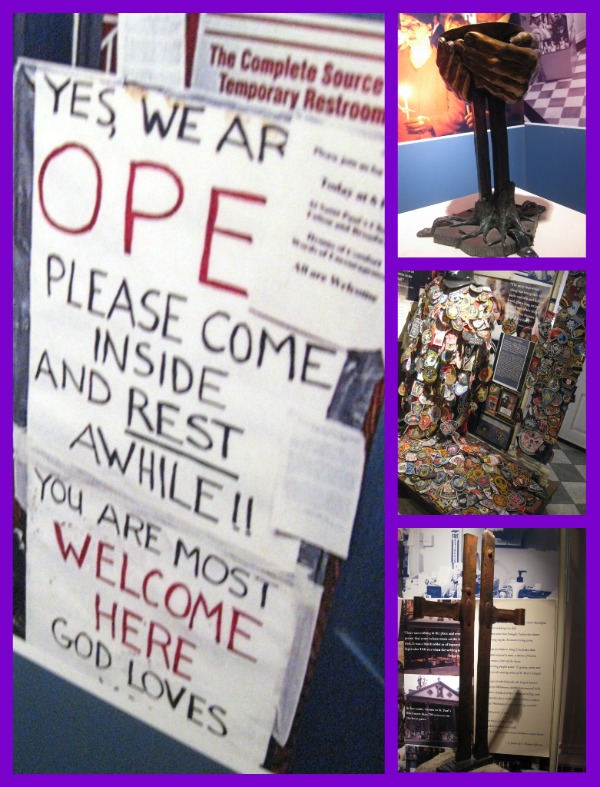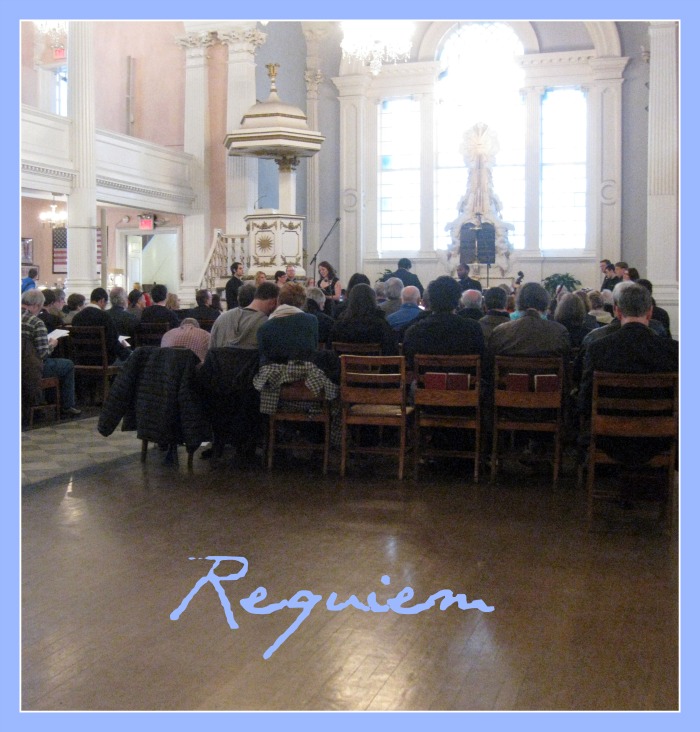New York is an amazing city to visit…one I wasn’t sure I’d ever get to.
I was there last week. Wow.
Wow.
Wow…just wow…unbelievable. The lights on Broadway that light it up brighter than day after dark. The “M & M” store is 3 stories tall…three stories of souvenirs celebrating the little colorful candies. No kidding. Even went to a show on Broadway…more wow.
But, by far, the most meaningful part of the trip was going to St. Paul’s church.
A little church…the oldest continually used building in Manhatten…built in 1767, 10 years before Confederation.The church George Washington went to pray in the day he became the first President of the United States.They even have his pew box that he used off to the side of the church.
St. Paul’s church is across the street from where the twin towers stood on the World Trade Center site.Though huge buildings all around sustained significant damage, this little church didn’t even have a window broken.It remained intact.
The meaningful part was how this church became a refuge, a meeting center of comfort and care in the many months after 9-11. Families posted pictures of missing loved ones on its fence…you’ve seen that fence in pictures, haven’t you? The church became a place for foot care and food, chiropractic care and , massage and naps, prayer and hugs for thousands of rescue workers. After dealing in the smoldering ruins to do their grisly recovery work, the workers could come and have some time of quiet, a time of restoration and sustenance before going back out to continue the painful and horrifying and brutally hard work.
“St. Paul’s chapel is a haven in the midst of hell.”
quote from the a rescue worker

This is a church that is two and half centuries old. A church that carries important history to it—a church that might have said, “Don’t come in here and mess anything up—this place is too historically significant to get dirty”…but every square inch of that place was used.
There were no sacred cows in the place.
George Washington’s pew box? Used for foot care for recovery workers who had their feet in boots that had been stepping on smoldering ruins for days.
The governer’s pew box? Used for storage for supplies of gloves, masks, chap stick, stuffed animals.
A church that could have legitimately have refused to have a nail put in the wall to hang a picture because of historical significance was plastered on every surface with messages of love and support. People of different religions, genders, cultures and orientations got in there and volunteered to help the rescue workers feel support during a time that was heartbreaking for a nation.

Restaurants provided food; hundreds of volunteers served meals 24 hours a day. Chiropractors helped workers unload their equipment and soothed their aching backs.Podiatrists patched and stitched tired, injured feet. Massage therapists eased away physical strain, often bringing forth tears and stories from their patients with a touch.
quote from church poster
The day we toured the church, we stepped in at exactly 1:00…the same time the concert started.
I wandered around the poignant displays with tears in my eyes as masterful musicians played and sang Brahms’ requiems…songs for the dead. A poet read his poetry written in response to 9-11, as I walked around the outskirts of the building, looking at the fire department badges, the poems, pictures, soup pots, cots, and art that remain from those months. The bittersweet beauty of the mournful music was powerful to listen to as I read stories of those remaining and looked at pictures of those who had perished. It was indeed a holy moment.

A quote from a poster on the site:
“I heard a firefighter say to a reporter, “When I come in that door, I’m covered with blood sometimes, and they hug me. They love me, they take care of me, they treat me as a real human being. And then they feed me, and they massage me, and they give me adjustments. These are my people. This is my place. This is where I come to be with God.”
The place felt like “love”…love and care triumphant in the midst of adversity.
I’ll never forget St. Paul’s church.







Write a Comment